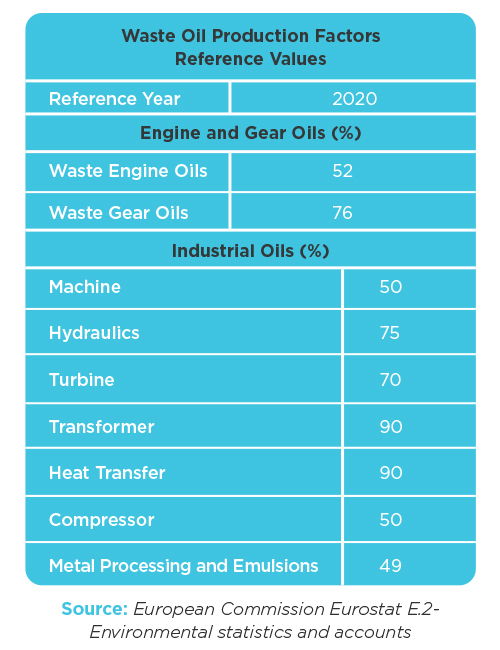The main problem in the effective and sustainable management of waste oils is that the total annual amount of waste oil generation is not known before waste oil minimization and recovery (raw material, energy, etc.) strategies are planned. In order to better identify, understand and manage the financial and economic strategies of companies and production facilities, there is a need for waste oil production factors that stakeholders can use to estimate annual waste oil generation quantities.
In addition, waste oil production factors come to the forefront in order to make fact-based estimates for the preparation of waste oil management plans by the authorities at the national or regional level. These factors can also be used to prove that economic growth does not necessarily mean an increase in waste oil production. However, at this point, the waste oil production factors developed must meet certain criteria.
For this reason, waste oil production factors to be developed to meet the demands of interested parties at different application levels are expected to meet the following requirements:
- Providing both up-to-date and representative data on waste oils,
- Identifying or characterizing problem areas as well as possibilities and potential for improvement,
- Easy to interpret and easy to use,
- Showing trends over time and providing a basis for projections,
- Sensitivity to changes,
- Providing a basis for comparisons in industrial sectors,
- Compliance with common scientific standards or international methods,
- Fitting into a conceptual framework.
Waste oil production factors that can be developed in this context are generally categorized under 2 main headings: automotive and industry. Some studies have been carried out so far for the automotive sector (transport, shipping) and industrial processes, which are the main sources of waste oils. However, these values are generally valid for the European region. The waste oil production factors valid for the European region are given in the table on the right.

Source: European Commission Eurostat E.2- Environmental statistics and accounts
The present table shows the rates of specific waste oil generation factors for various lubricating oils. These factors generally indicate the fraction of waste oil that can be collected at the end of the useful life of the lubricants supplied to the market. As a result of multiplying the amount of lubricants placed on the market by the specific waste oil generation factors (ratios), the amount of (collectible) waste oil that will arise from the specific application of lubricants (engine, gearbox, machine, hydraulic, etc.) can be calculated.
Considering the uncertainty of waste oil statistics and the factors affecting the generation of waste oil, the estimation of waste oil quantities is very difficult and the studies carried out so far to analyze and explain the future generation of waste oil are quite inadequate.
Therefore, this situation requires the development of waste oil production factors that can be used in the country on the basis of oil types. Thanks to the studies to be carried out, by planning appropriate collection and recovery systems, the spread of waste oils to the environment as a result of unconscious processes can be prevented and the amount of recoverable material and energy recovery will be increased.




